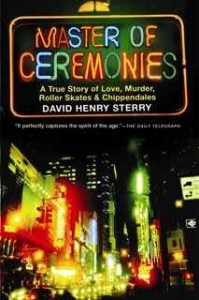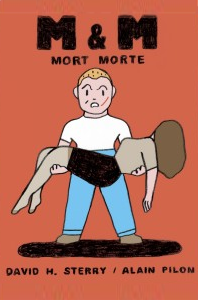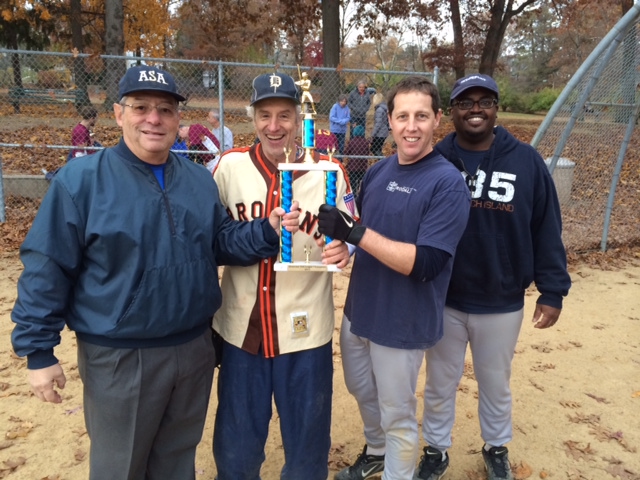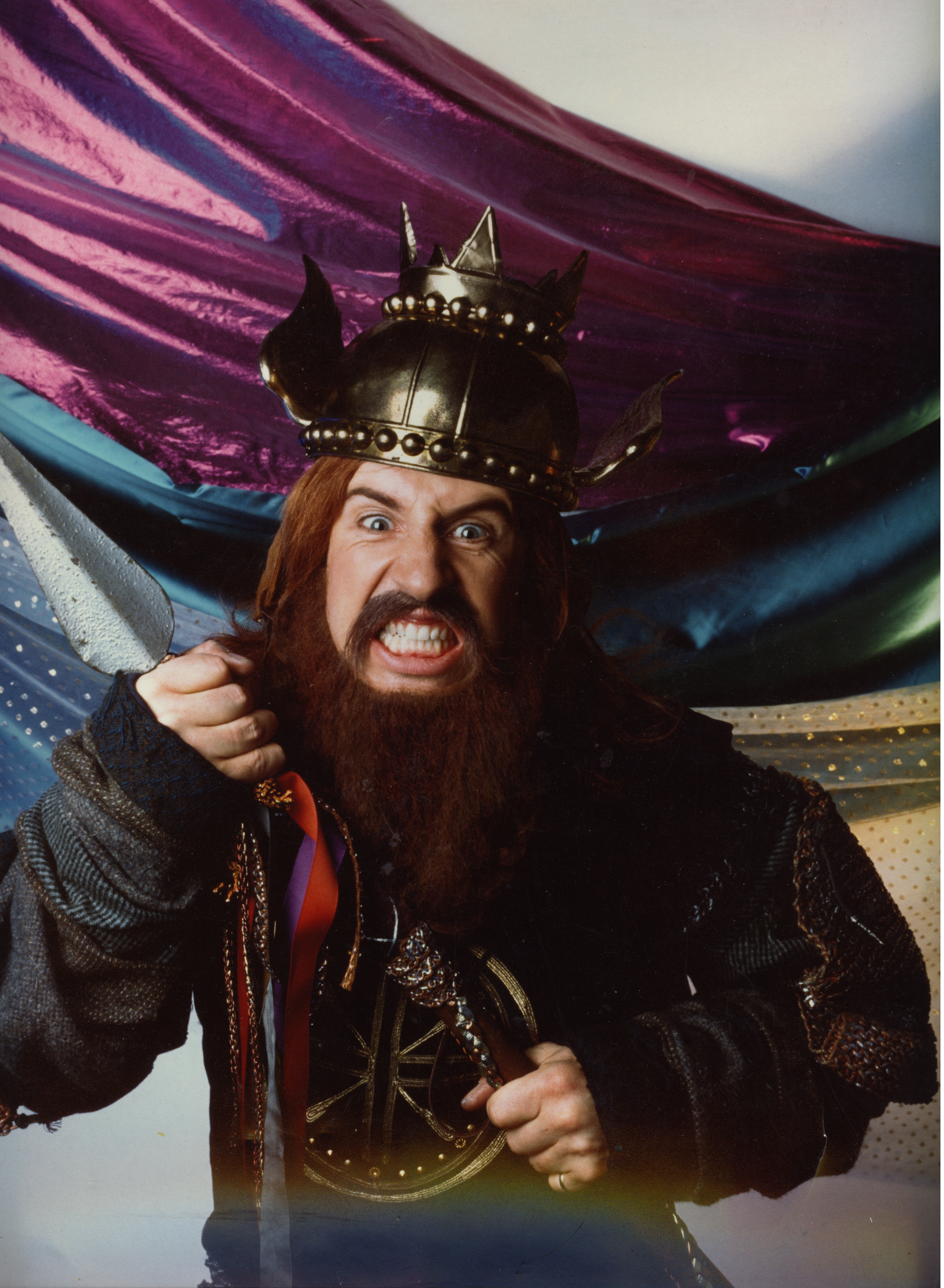
Purchase the BookPaperback : Amazon.com | Barnes & Nobles | Indiebound | The best, most comprehensive book for writers is now completely revised and updated to address ongoing changes in publishing. Published in 2005 as Putting Your Passion Into Print, this is the book that’s been praised by both industry professionals (“Refreshingly honest, knowledgeable and detailed. . . . An invaluable resource”—Jamie Raab, publisher, Grand Central Publishing) and bestselling authors (“A must-have for every aspiring writer.”—Khaled Hosseini, author of The Kite Runner). With its extensive coverage of e-books, self-publishing, and online marketing, The Essential Guide to Getting Your Book Published is more vital than ever for anyone who wants to mine that great idea and turn it into a successfully published book.Written by experts with thirteen books between them as well as many years’ experience as a literary agent (Eckstut) and a book doctor (Sterry), this nuts-and-bolts guide demystifies every step of the publishing process: how to come up with a blockbuster title, create a selling proposal, find the right agent, understand a book contract, develop marketing and publicity savvy, and self-publish. There’s new information on how to build up a following (and even publish a book) online; the importance of a search-engine-friendly title; producing a video book trailer; and e-book pricing and royalties. Includes interviews with hundreds of publishing insiders and authors, including Seth Godin, Neil Gaiman, Amy Bloom, Margaret Atwood, Larry Kirshbaum, Leonard Lopate, plus agents, editors, and booksellers; sidebars featuring real-life publishing success stories; sample proposals, query letters, and a feature-rich website and community for authors.
Praise for the First Edition of The Essential Guide to Getting Your Book Published (Previously published as Putting Your Passion Into Print) “A must-have for every aspiring writer . . . Thorough, forthright, quite entertaining.”—Khaled Hosseini, bestselling author of The Kite Runner and A Thousand Splendid Suns (Riverhead) “Before you write your own book, read this one. Arielle Eckstut and David Henry Sterry understand the process of publishing—their advice will help you envision and frame your work so that publishers will be more likely to perceive its value.”—Jonathan Karp, publisher, Simon & Schuster “I had no idea that the code of publishing would be as hard to decipher as the secret language of adolescent girls. If only I had Putting Your Passion into Print when I started writing!”—Rosalind Wiseman, author of Queen Bees and Wannabees, the book that inspired the movie Mean Girls (Three Rivers) “Putting Your Passion Into Print changed my life. I read and reread each of your chapters, lived by your organizational and promotional advice, and, despite all odds, my rather uncategorizable book is a success. With no track record or cash, we’ve gotten onto TV and into national print media, been blurbed by the LA Times and the Village Voice, and sold out a third of our print run within three weeks of launch.”—Molly Crabapple, author of Dr. Sketchy’s Official Rainy Day Colouring Book (Sepuculture Books) “I started with nothing but an idea, and then I bought this book. Soon I had an A-list agent, a near six-figure advance, and multiple TV deals in the works. Buy it and memorize it. This little tome is the quiet secret of rockstar authors.”—Timothy Ferriss, bestselling author of The 4-Hour Workweek (Crown) “Putting Your Passion into Print has been absolutely invaluable through this whole process! It’s on my bedside, with dozens of post-its peeking out!”—Veronica Wolff, author of Master of the Highlands Series (Berkley) “Arielle and David did a masterful job at deconstructing our complicated, often irrational industry. Putting Your Passion into Print is fun to read and brutally honest, but it’s also energizing and inspiring.”—Lynn Goldberg, CEO, Goldberg McDuffie Communications “I curled up in a big chair and read Putting Your Passion into Print like a novel. Written with insight and humor, it takes us through the writing process from idea to sequel. I wish I had a book this thorough and thoughtful and downright indispensable for every aspect of my life.”—Karen Cushman, author of the Newbury Award winner The Midwife’s Apprentice and Newbury Award runner-up Catherine, Called Birdy (HarperCollins) “This is a terrific book. It’s practical, it’s fun to read, and it totally demystifies the publishing process. Whether you are just setting out to write a book, or already have several published books under your belt, you will find this an invaluable resource. There is no doubt in my mind that it will become a standard of the industry, sitting right alongside Writer’s Market and The Chicago Manual of Style. (And let me tell you—it’s a much better read than either of those books could ever dream of being!)”—Rick Beyer, author of The Greatest Stories Never Told Series (Harper) “I took myself to lunch today and brought along Putting Your Passion Into Print, and I’ll be damned but it made me remember why I love this business and why the suffering is all worth it in the end. It’s a terrific book that finally put me in a good mood again.”—Annik LaFarge, former publisher of Bloomsbury Books “You know all those books sitting on your shelf about how to get published? Well, you can finally unload them at your garage sale because this book is all you’ll ever need. A-to-Z, Soup-to-Nuts, this is the most comprehensive guide available on how to become a published author.”—Nancy Levine, author of The Tao of Pug (Penguin) “These two know everything about the book business and share every detail in this fabulous book. Putting your Passion into Print answers every question you have with playful charm, wisdom and savvy. If you’ve written a book, are writing one or are just thinking about it, you NEED Putting Your Passion Into Print. It will make a marvelous gift for all of your writer or would-be writer friends. You’ll love it.”—Susan G. Wooldridge, author of poemcrazy (Three Rivers Press) “This book is a must-have! I cannot say enough about how helpful, inspiring and dead-on it is.”—Tracy Davis, author of My Husband Ran Off with the Nanny and God Do I Miss Her (self-published) “I got an agent and a publisher for my book within 3 weeks of submitting the proposal—and not a single rejection letter! When would-be authors ask me for advice I send them to the store to buy Putting Your Passion Into Print! Bravo to the authors for a comprehensive guide to writing, publishing and marketing your book.”—Donna Cutting, author of The Celebrity Experience: Insider Secrets to Delivering Red-Carpet Customer Service (Wiley) “I recommend this book to every author I know, at any stage of their careers. I’m such a vociferous advocate, some of my friends may think I’m in a cult!”—Melissa Kirsch, author of The Girl’s Guide to Absolutely Everything (Workman) “As a consultant, I make my living by understanding how companies and industries work from the inside out. To succeed as an author, you need an inside-out view of how publishing works. For that, there’s simply no better guide than Putting Your Passion into Print.”—Geoffrey Moore, author of four Wall Street Journal and Business Week bestsellers, including Crossing the Chasm and The Gorilla Game (Harper) “Putting Your Passion into Print offers aspiring authors refreshingly honest, knowledgeable and detailed advice on not only how to get published, but how to deal with every phase of the publishing process constructively and realistically. It’s an invaluable resource for anyone who dreams about having his/her book not only published, but published well.”—Jamie Raab, publisher, Grand Central “If you’ve ever thought about writing a book, are in the process of writing a book or have written a book and are contemplating another, stop what you’re doing right now—and buy this book. It contains everything you need to know to proceed, especially how to press your own enthusiasm button.”—Sandra Blakeslee, author of The Unexpected Legacy of Divorce (Harper Perennial), Phantoms in the Brain (Hyperion), and On Intelligence (St. Martin’s Griffin) “This honest, comprehensive and inspiring book is the best description of the contemporary publishing world that I’ve seen. It should be at the center of every writer’s reference shelf for decades.”—Neal Pollack, author of Never Mind the Pollacks and The Neal Pollack Anthology of American Literature (Harper Paperbacks, Harper Perennial) “From coming up with an idea to promoting the finished book, these insiders tell you what you need to know and inspire you to do it—with wit, charm and a thorough knowledge of what they write.”—Amy Cherry, editor, W.W. Norton “Putting Your Passion into Print is a Rosetta Stone for authors, a guide that takes the mystery and uncertainty out of getting your book published. This book takes you inside the publishing industry and reveals what makes it tick. Prospective authors, listen up. This is the definitive manual on taming this lumbering giant. If you want your book to see the light of day, read this one.”—Larry Dossey, M.D., author of The Extraordinary Healing Power of Ordinary Things, Reinventing Medicine (Three Rivers), and Healing Words (HarperOne) “I wish I had had this book when I started writing for publication. It’s got the perfect blend of right-brain creativity and left-brain strategy to help you succeed as an author.”—Dr. Betty Edwards, bestselling author of Drawing on the Right Side of the Brain (Tarcher) | Excerpts |
Month: November 2013
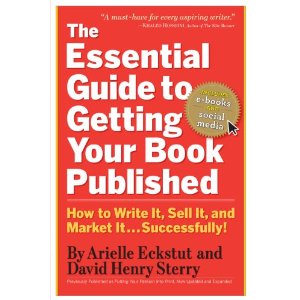

To buy Mort Morte click here.
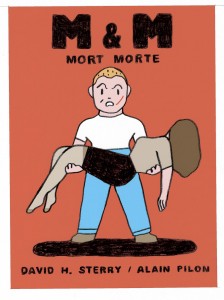 “It’s fall now and the season for amusement parks may have drawn to a close but if you’re looking for one wild ride, you could do a lot worse than pick up Mort Morte by David Henry Sterry. By turns absurd, hilarious and tragic, this fairly quick read tells the story of Mordechai Murgatroyd Morte, a young man who follows his mother through her unfortunate marriages to several physically and sexually abusive men.
“It’s fall now and the season for amusement parks may have drawn to a close but if you’re looking for one wild ride, you could do a lot worse than pick up Mort Morte by David Henry Sterry. By turns absurd, hilarious and tragic, this fairly quick read tells the story of Mordechai Murgatroyd Morte, a young man who follows his mother through her unfortunate marriages to several physically and sexually abusive men.
The novel begins with these lines: “On my third birthday, my father, in an attempt to get me to stop sucking my thumb, gave me a gun. ‘Today, son, you are a man,’ he said, snatching the little, blue binky from my little, pink hand. So I shot him.”
Although the abusive element is merely hinted at in the character of Mort’s father here (who gives his three-year-old son a gun?), the farcical quality is immediately apparent and sets the tone for Mort’s experiences with his mother’s future and more clearly terrible husbands. As she moves from conjugal attachment with one man and then another, Mort ultimately finds new ways of ridding himself and his mother of their nonsense by acts of gruesome murder.
As Mort advances into his teenage years and moves to Rome, Texas so that his mother may tie the knot with Billy Bob Bobby Joe Willy Dick Bodine (BB, for short), the first hint of Mort’s own intense sexuality emerges in a lusty relationship with Muffy Thunderbuck, his school’s goddess of beauty and sensuality. “In out, in out,” Sterry writes in multiple consecutive paragraphs, representing the relationship in absurdly physical terms, which reflects equally on the emotional hollowness of the men brought into his life by his poor “milky” British mother.
Cleverly, however, into the apparent hollowness of the prose one can read some of the most serious of childhood traumas–vulnerability, helplessness at the hands of abusive adults and the kind of resilient self-reliance that is the sanctuary for young men lacking the benefits of a stable household. Both socially awkward and intellectually brilliant (the latter quality of which captured Muffy’s heart, or did it capture her legs?), Mort becomes the dreaded agent of his mother’s constant widowhood and also her savior as he rids her time and again of negligent, angry men.
The novel seems to reflect the story of a sensitive young man and his mother struggling to survive in a tough, unforgiving world. The final irony of the story, however, occurs after Mort, having blown up his mother’s latest beau, Bartholomew Dinsdale Dinkleberry, with a vial of nitroglycerine, finds that he and his mother will be kicked out of Rome. Following a self-pitying visit to Muffy Thunderbuck for some physical “comfort”, Mort returns home to find his mother has slipped out of town, stating in a note she has left behind that she has moved ahead and will “find a good boarding school for bright young people who don’t quite fit in, which we all know you are, pet, and you will join us later. Everything will be fine, most likely.”
Only, Mort knows nothing will be fine. His mother, he realizes in an instant, is in many ways the cause herself of so much grief and self-destruction in submitting to the abusive routines of so many bad men. Whereas Mort always believed in his goal to protect, he now–at the moment of maternal abandonment–realizes it was her destructive personality which, aside from earning her a great future through the wealth of one now-dead husband, has callously prompted her to leave behind an awkward son.
The monumental irony then is upon the discovery of abandonment. If children are often seen as wild uncontrollable creatures, their adult counterparts fare far worse in this writer’s treatment. Mort Morte is the engaging and unusual story of a young man who finds the one person to whom he is most devoted to be the primary agent of his worst suffering.” – Joe Kovacs

At 16 I’m shipped away to Boarding School for my sins. The school is full of bright, gifted, spindled, folded, and mutilated teenagers, almost all of whom have been kicked of at least 1, if not several, other institutions of learning. Believe me, I fit right in at Boarding School.
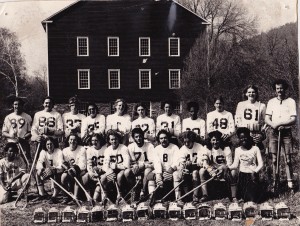 We have the worst hockey team in the history of the league. Our first game we get beat like 31-1. Do you have any idea how difficult it is to let in 31 goals in 30 minutes? Any way you do the math, that’s over a goal a minute, ladies and gentlemen. The best player on the team is Joe Skyfeather. We call him Joe Starfucker, and he likes that. He’s our goalie. A great goalie. After every game he’s one huge Iriquois welt. He says if he wasn’t a hopeless Indian drunk already, he’d have to start drinking heavily. The one good thing about losing 31-1 is that when you score that 1 goal, man, you celebrate hard.
We have the worst hockey team in the history of the league. Our first game we get beat like 31-1. Do you have any idea how difficult it is to let in 31 goals in 30 minutes? Any way you do the math, that’s over a goal a minute, ladies and gentlemen. The best player on the team is Joe Skyfeather. We call him Joe Starfucker, and he likes that. He’s our goalie. A great goalie. After every game he’s one huge Iriquois welt. He says if he wasn’t a hopeless Indian drunk already, he’d have to start drinking heavily. The one good thing about losing 31-1 is that when you score that 1 goal, man, you celebrate hard.
Half-way through our season, we’re 0-5. We’ve scored 4 goals, while allowing about, I don’t know, maybe a kazillion. We’re going to play our sixth game, on the road, against Andover, 1 of the hoitiest of the toity prep schools in America. As we’re getting ready to leave, Rat comes in all excited. He’s just scored some acid from his brother who’s out on parole and laying low in Rat’s room. I’ve never taken acid at this point, but the word from Rat’s brother is that this is the trippiest shit he’s ever seen. And apparently he’s seen some pretty trippy shit. And there’s enough for everybody. Rat whips it out. I’m expecting some bubbling liquid in a laboratory beaker, with smoke and prisms and colored lights. But no. It’s just an 8 x 10 sheet of paper. He peels something off, and with an impish grins, places it on his tongue and downs it. He holds it out for us to join him. Everyone sits and stares.
“Come on, you sorry bunch of pansy-asses. We gotta go show those rich bitches what it means to be play this game with a head full of the trippiest shit in the Berkshire Mountains. We gotta show the world that we may be the worst hockey players in history, but we’re the all-time greatest partiers. We gotta let our freak flag fly, man!’
Rat’s speech stirs something within me. In all of us. We’re castoffs, misfits, the throwaways of our generation. And suddenly we’ve got a shot to go down in school history, turn ourselves from laughing stock into folk heroes, talked about around campfires for generations to come.
Still, no one wants to be the first to follow Rat down the road to Infamy. Eyes are averted. Feet shuffled. Harrumphs abound.
It’s times like this that turn boys into men. While us white suburban bourgeois laddies sit with our thumbs up our collective ass, it takes a young brave from the reservation to lead us. A boy warrior whose ancestors have been raped and pillaged, lied to, deceived, mocked, vilified, burned out of the land they loved, hunted down and destroyed like vermin. Joe Starfucker. He rises slowly, a beat-up rented mule of a goalie with long, straggly scraggly raven hair. He walks with the weight of the ages to Rat and sticks out his tongue.
 Rat grins like Jack Nicholson in The Shining.
Rat grins like Jack Nicholson in The Shining.
“Yeah baby, that’s what I’m talkin’ about. Joe Starfucker, you are the man!”
Joe closes his eyes and crosses himself, while Rat places the tab on his tongue like he’s giving Holy Communion. When Starfucker swallows, everybody whoops and hollers. Rat then dispenses the rest of the acid like he’s High Priest of the Order of Psychedelic Hockey, a cross between the Pope, Timothy Leery and Wayne Gretsky.
Beevo, Nevs, Harry the Hoagy, Fat Phil, Dougy the K, even Lurch, all gobble down their medicine.
When my turn comes, I’m shocked to find out that the tab of acid is actually a thin little transparent Mickey Mouse. I smile as I swallow my electric Disney coolaid, visions of Snow White and her freaky dwarves stoned off their nuts, as Jimi Hendrix wails “Some Day My Prince Will Come” in the background.
It’s quiet on the bus to the game. Scary quiet. Everyone’s bugging eyes at each other, trying to see if anything’s happening, wondering if this really is some trippy shit, and if it is, what it will be like trying to play hockey against the masters of the universe Andover superstars while we’re massively loop-de-looped.
Then suddenly we’re pulling into Andover. You can smell the money. At least I think that’s what the smell is. The dorms are all swanky swank swank. The grounds are manicured to within an inch of their strangulated lives. The boys are wearing their spiffy little blue blazers, and their spastic little tassley shoes with their dorkadelic little preppy haircuts. If you weren’t high on some trippy shit already, looking at all these Young Republican bootlickers-in-training would make you go all wavy gravy in a New York minute.
I’m still not feeling any effects, and frankly I’m beginning to wonder whether Rat’s brother sold us all a bill of goods, as we troop into the Taj Mahal locker room, looking at each other for any tell-tale signs of synaptic scramble.
 Not a word is spoken as we don the tools of ignorance necessary for us to get the inevitable ass-whupping we are about to take. Our coach, Mr. Clament, the Clam, a besotted French teacher, senses something is amiss. He clears his drunken throat, and launches into a Win-One-For-the-Gipper speech.
Not a word is spoken as we don the tools of ignorance necessary for us to get the inevitable ass-whupping we are about to take. Our coach, Mr. Clament, the Clam, a besotted French teacher, senses something is amiss. He clears his drunken throat, and launches into a Win-One-For-the-Gipper speech.
About half-way through the Clam’s speech, his face starts melting, his tongue flicks out like an iguana, and his eyes spring loose from their sockets like those eyeball glasses that hang down and wobble when you move your head. His nose spreads out like Silly Putty smushed as his eyebrows do the Australian crawl across his face. His lips are wax candy and his teeth are changing colors like the Wizard of Oz’s horse: red to green to blue to orange.
I shake my head to try and clear it, but that just makes little fireworks with tails shoot across the inside of my eyeballs in wonderful waving watercolors.
I look around. Everyone’s shaking their head, eyes covered with potter’s glaze, like a flock of sheep who’ve just been converted to Christianity.
The Clam reaches his drunken crescendo, expecting a rousing jolt of competitive manchild testosterone. Nothing. We just sit there, staring like big mouth bass, tripping our little brains out. He’s dumbfounded, and decides his next logical move is go into the bathroom and drink, so he shrugs, turns, and disappears into the bathroom to drink.
“Is this some trippy shit or what?” Rat pops his eyes out of his head and rolls them around, and the laugher lets loose – KABANG! – and we chortle like whacked-out bobbing head dolls.
The Andover superstar uniforms are shiny and new as the masters of the universe prepare to use us as the tools of their athletic glorification. They look like bourgeois marionettes to me, stooge puppets of the paramilitary fascist state. The thought of cutting their strings and watching them crumble cracks me up, and I catch an edge of my skate on the ice, tumbling down, and sliding headfirst into the boards with a loud crash. The game hasn’t even started yet, and I’ve already checked myself. Our whole team stops their pitiful warm-up, stares at me, and gets the giggles, tittering like schoolboys, kids in the stands pointing fingers and laughing at us, Andover superstars glaring with smug, condescending menace.
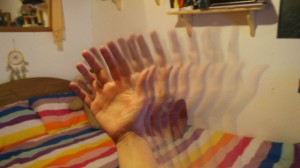 Then suddenly the game is starting, and the crowd shape-shifts, all beautiful fuzzy colors that only make sense when you look at the whole thing from a distance. When I focus on any one person, the face seems to disintegrate and lose focus. Or maybe it is me who’s disintegrating and losing focus. Hard to say for sure. The referee looks like a big fat zebra. I chuckle thinking about the lion waiting for him at the watering hole after the game.
Then suddenly the game is starting, and the crowd shape-shifts, all beautiful fuzzy colors that only make sense when you look at the whole thing from a distance. When I focus on any one person, the face seems to disintegrate and lose focus. Or maybe it is me who’s disintegrating and losing focus. Hard to say for sure. The referee looks like a big fat zebra. I chuckle thinking about the lion waiting for him at the watering hole after the game.
The puck takes about six weeks to drop from the fat Zebra’s hoof to the ice. I discover I don’t have to move my legs to skate. I float over the ice like an angel on a wave of feathers. Beevo is winning the face-off now, and the puck shuffles back to me. It takes its sweet time. It realizes time is sweet. I stop it with my stick, which bends and waves in my hands. An Andover superstar rushes headlong at me, snarling like an overbred hound from hell, but moving in slow motion. I sidestep him with the greatest of ease. I have to stop myself from laughing it’s so much fun. My bones are almost-congealed jello, my skin tingles with the fire of Godlove, and my third eye is wide open. I see Harry the Hoagy streaking with trails like a comet up-ice and I can see the line the puck will travel to get to him before I even make the pass. So I flick my stick and the puck goes on that exact line, like a geometry equation only I can see. As if Harry the Hoagy and I are connected by a Higher Power. The puck nestles gently on The Hoagy’s stick. He cuts between the two Andover behemoth superstar defensemen and suddenly he’s 1-on-1 with the master of the universe goalie, face to mask, stoned off of his nut. Harry the Hoagy starts to go right, the goalie bites, Harry changes his mind, slides the puck onto his backhand and eases it into the gaping mouth of the goal like Casanova scoring with the Queen of France.
We stop. The crowd is all stunned silence. The Andover superstars flabbergast. Then it dawns on us. We scored a goal. We’re ahead for the first time the whole year. We free-form to Harry the Hoagy and do a group hug interpretive dance celebration, Fosse meets Bullwinkle. The fat Zebra has to come get us to re-start the game. We’re too busy celebrating. We’ve never celebrated being ahead in a game before, and we have no idea how it’s done, or when it’s supposed to be over.
The whole game is like that. Lurch hits a guy so hard he airlifts him up off the ice and knocks out his whole family. Rat is a whirling dervish, breaking up plays, leading rushes, poke-checking guys who aren’t even there. Fat Phil is a man possessed, moving like one of those graceful hippo ballet dancers in tutus from “Fantasia”. And Joe Starfucker,a well, Joe plays the game of his life. Stick saves, pad saves, glove saves. At one point he makes a save, and his glove flies off. The puck rebounds right back to an Andover superstar, and he fires again. Joe Starfucker reaches out and catches that puck with his bare hand. This time even the Andover superstar crowd has to give him a big ovation. They don’t want to, you can tell. They have to. He holds the puck over his head, he’s showing it the Great Puck Spirit, then bows deeply, as if he’s a Japanese kabuki actor.
 Late in the game, the Andover superstars manage to sneak one by Joe Starfucker, after they roughed him up in the crease, which as anyone who’s ever been roughed up in a crease knows, is nasty business, and strictly illegal to boot. The game’s winding down, and the Andover superstars are sharks who’ve smelled blood. But the acid still floods our collective brains with the power and beauty of Mother Earth and Father Sky, and we match the superstars hammer for tong.
Late in the game, the Andover superstars manage to sneak one by Joe Starfucker, after they roughed him up in the crease, which as anyone who’s ever been roughed up in a crease knows, is nasty business, and strictly illegal to boot. The game’s winding down, and the Andover superstars are sharks who’ve smelled blood. But the acid still floods our collective brains with the power and beauty of Mother Earth and Father Sky, and we match the superstars hammer for tong.
There’s a minute left to play. We to get a face-off deep in superstar territory. Beevo takes the face-off, the puck falling like a big black penny from heaven. Beevo flicks it easily back to Lurch at the point. Lurch winds up and takes a Paul Bunyon swing at it. However, he mostly misses, catching the puck on end so it flutters like a drunken butterfly toward the net. The Andover superstars are caught off-guard. They’re expecting a bullet, clenched and moving towards the upper left corner of the goal, where it is happily headed.
I see the puck fluffernutting towards me, getting bigger and bigger as it calls my name:
“Here I come, David – here I commmmmmme…”
I see myself gently flicking the puck, caressing it lightly like a well-loved lover past the Andover superstar goalie. So I reach up with my wavy stick and kiss the crazy gyrating puck with it. The Andover superstar defensemen and goalie are already off-balance because it is loop-de-looping instead of shotgunning, and when I flick it, the puck tumbles down and right, leaving them grasping at air straws.
Gently lovingly it bulges pillowy into the billowing netting of the goal.
The buzzer sounds.
BUZZZZZZZ!
The game is over.
The silence sits on the ice like the gods have pushed the mute button.
David has slain Goliath. Not with a stone and a slingshot, but stoned with a headful of totally trippy shit.
We skate over to Joe Starfucker and jump on top of him, flopping around on the ice like a huge undulating amoebae, until they cart us off. In the locker room our clothes jump off our bodies. We sing in the rain of the shower, then have a wild raucous ride home.
Word of our triumph, and how achieved it, spreads like wildfire through our little community. Of course we never win another game all year. Never even come close. Rat’s brother gets put back in the slammer, and that’s the end of the great Acid Experiment.
But for one glorious winter afternoon, we were one with the universe, Kings of the World, and we did it tripping the light fantastic.

 To commemorate the publication of the 10 year anniversary edition of my memoir Chicken Self:-Portrait of a Man for Rent, I have decided to do a series of interviews with memoirists I admire. Marion Roach Smith not only talks the talk, she walks the walks. She is a memoirist, journalist, and has now written a book which every memoirist should own and scour. Here’s what she had to say about the Art of the Memoir
To commemorate the publication of the 10 year anniversary edition of my memoir Chicken Self:-Portrait of a Man for Rent, I have decided to do a series of interviews with memoirists I admire. Marion Roach Smith not only talks the talk, she walks the walks. She is a memoirist, journalist, and has now written a book which every memoirist should own and scour. Here’s what she had to say about the Art of the Memoir
David Henry Sterry: Why in god’s name did you decide to write a memoir?
Marion Roach Smith: Ha ha ha. I’ve written and published several, as well as countless radio essays, op-eds and the like from my point of view. My recent book, The Memoir Project: A Thoroughly Non-Standardized Text for Writing and Life, contains lots of personal essays. I write memoir to understand things. My first book was an expansion of a New York Times Magazine piece I wrote about my mother’s Alzheimer’s disease. She was 49 when she got sick, and there had never been a piece in the popular press about the disease. Hard to imagine now, I know. Mine was the first, and went on to become one of the most reprinted pieces in the magazine’ history. The first book followed. My reason for writing the piece was to do some advocacy journalism. Same for the book. Change the world. Get funding. Make people care. It worked.
DHS: What were the worst things about writing your memoir?
MRS: There are no worst things. There are consequences, good and bad. On the good side, I’m quite sure that much like in life, success in writing is all about which aspects of your experience you choose to emphasize. In those terms, the worst thing, as you say, can be learning something you were unprepared to learn.
DHS: What were the best things about writing your memoir?
MRS: The best thing is learning things you were unprepared to learn. Hey, it beats the hell out of watching reruns on TV or surfing the web. Some of my middle-aged friends tell me they would like to feel something again. Write about your life. I promise, you’ll feel something.
DHS: Did writing your memoir help you make some order out of the chaos we call life?
MRS: Order. Absolutely.
DHS: How did you make a narrative out of the seemingly random events that happened to you?
MRS: Random? Really? Says who?
DHS: How was the process of selling your memoir?
MRS: I have found that all my different pieces of memoir have done fine. The first sold off of a magazine piece, as I said. The second book-length memoir I wrote was tucked inside a book called The Roots of Desire, which is on the history of red hair. I’m a redhead. No one had ever written that rich history, so it was a first, and easy to pitch, tracing the mutation of a gene back to its eruption in the genome and looking at all the art and story, drama, iconography worship and hatred of redheads. It was a first. The individual radio essays I pitch to NPR, one at a time.
It goes fine.
DHS: How did you go about promoting and marketing your memoir?
MRS: I learned a great lesson years ago, which is to not go for reviews, but to go for features. So for book-length pieces, I contact newspaper feature editors, beauty and science editors (for the book on red hair, for instance), seeking feature pieces on the topic. It works well. I blog, I promote other writers, and they promote me; I use social media wisely.
DHS: Did you have difficulty speaking in public about the intimate aspects of your memoir?
MRS: Not a bit. Successful memoir is not about me. It’s about something larger, and I am the illustration. That is, if you want anyone to read it. The intimacy with the audience becomes about the larger, universal topic. It’s a great experience.
DHS: How did your family, friends and loved ones react to your memoir?
MRS: Family is a pizza, and everyone gets a slice. That being the case, no two family members see or remember a single event the same way, so you are going to get blowback. “That never happened, “ is what you’ll hear. And she’s right, the sister who says that to you. “That’s not the way it happened,” I say to that. “To you. That’s the way it happened to me.”
DHS: I hate to ask you this, but you have any advice for people who want to write a memoir?
MRS: Memoir is about territory, and you have to stake yours out, walk its perimeter. When you do, you’ll find that each good story is bordered by your areas of expertise. I’m a woman, a sister, a wife, a mother, a member of my college board of trustees; I live with a fine dog, I sail, garden, play lots of sports. These are individual areas of expertise. Write from one of those at a time and you’ll never be tempted to write one of those turgid tomes that begins with the birth of your great-great grandfather, and ends with what you had for lunch yesterday.
Marion Roach Smith believes that everyone has a story to tell. The author of four books, all of which contain a large degree of memoir, her most recent book is The Memoir Project: A Thoroughly Non-Standardized Text for Writing–And Life, (Grand Central, 2011) an irreverent, quirky, provocative product of the countless memoir classes she has taught for more than a decade. Under the name Marion Roach, she is the author of The Roots of Desire: The Myth, Meaning and Sexual Power of Red Hair, (Bloomsbury, 2005), a wild blend of memoir and history; the co-author with famed forensic pathologist Michael Baden, M.D., of Dead Reckoning (Simon & Schuster, 2001), a hands-on, behind-the-scenes journey into the world of forensic science; and of Another Name for Madness, (Houghton Mifflin, 1985), the first, first-person account of a family’s dramatic struggle with Alzheimer’s disease. That book was an expansion of a record-breaking reprint of a piece she published in 1983 in The New York Times Magazine. A former staff member of The New York Times, she has written for The New York Times Magazine, Prevention, The Daily News, Vogue, Newsday, Good Housekeeping, Martha Stewart Living, Discover and The Los Angeles Times. A commentator on National Public Radio’s All Things Considered, from 2005-2011 she was the author and voice of The Naturalist’s Datebook, heard daily on Martha Stewart Living Radio, Sirius/XM 110.
David Henry Sterry is the author of 16 books, a performer, muckraker, educator, activist, and book doctor. His new book Chicken Self:-Portrait of a Man for Rent, 10 Year Anniversary Edition, has been translated into 10 languages. He’s also written Hos, Hookers, Call Girls and Rent Boys: Professionals Writing on Life, Love, Money and Sex, which appeared on the front cover of the Sunday New York Times Book Review. He is a finalist for the Henry Miller Award. He has appeared on, acted with, written for, been employed as, worked and/or presented at: Will Smith, a marriage counselor, Disney screenwriter, Stanford University, National Public Radio, Milton Berle, Huffington Post, a sodajerk, Michael Caine, the Taco Bell chihuahua, Penthouse, the London Times, Edinburgh Fringe Festival, a human guinea pig and Zippy the Chimp. He can be found at www.davidhenrysterry.com. https://davidhenrysterry.com/
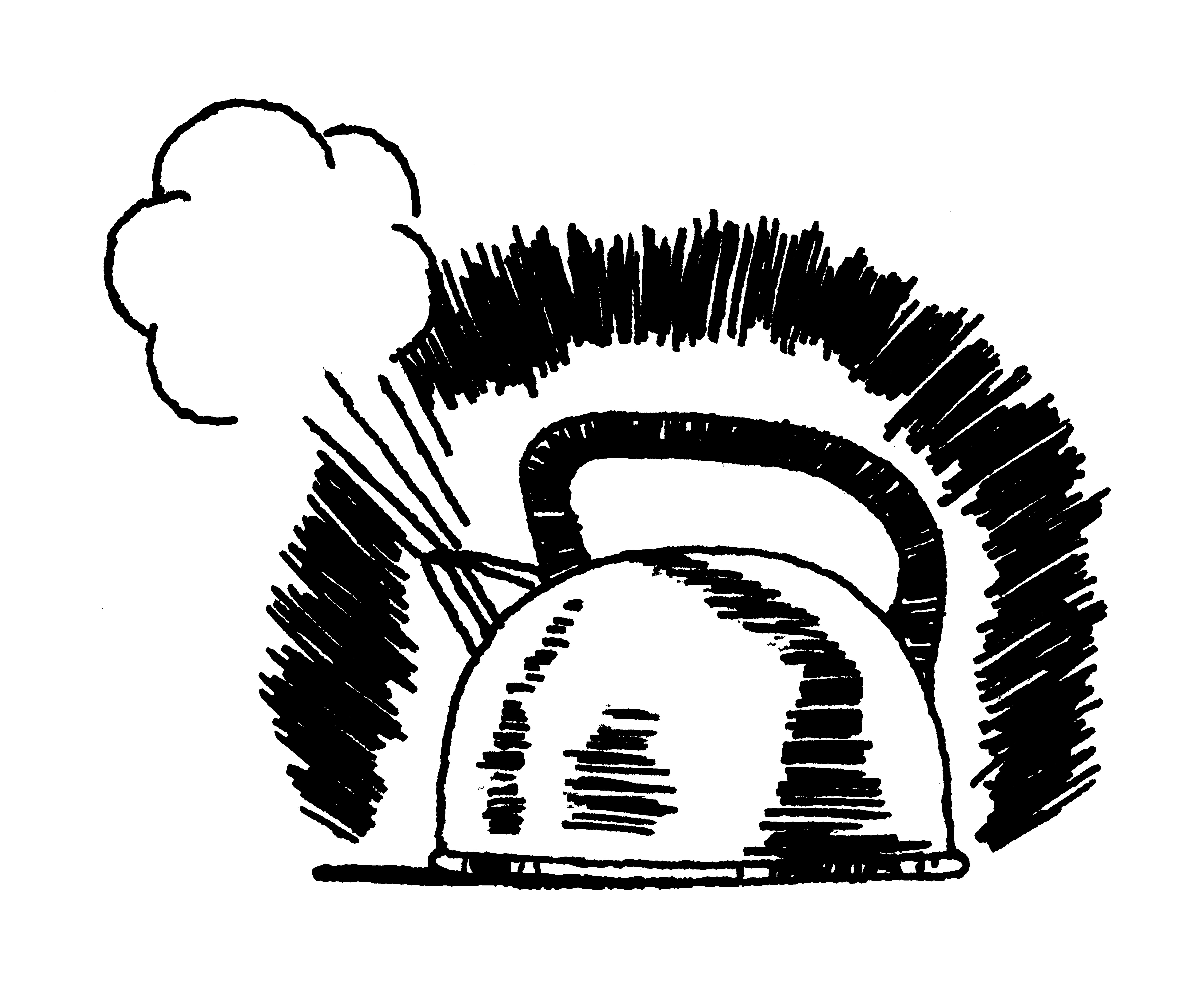
To you the interview on Slashed Reads, click here.
 David Henry Sterry is the author of Mort Morte, an absurd, hilarious, tragic and disturbingly haunting comedy published by Vagabondage Press in January 2013. David is the author of 16 books and a finalist for the Henry Miller Award.
David Henry Sterry is the author of Mort Morte, an absurd, hilarious, tragic and disturbingly haunting comedy published by Vagabondage Press in January 2013. David is the author of 16 books and a finalist for the Henry Miller Award.
What is your book about?
On my third birthday, my father, in an attempt to get me to stop sucking my thumb, gave me a gun. “Today son, you are a man,” he said, snatching the little blue binky from my little pink hand. So I shot him.
So begins my novel Mort Morte. It’s a macabre coming-of-age story full of butchered butchers, badly used Boy Scouts, blown-up Englishman, virginity-plucking cheerleaders, and many nice cups of tea. Poignantly poetic, hypnotically hysterical, sweetly surreal, and chock full of the blackest comedy, Mort Morte is like Lewis Carroll having brunch with the kid from The Tin Drum and Oedipus, just before he plucks his eyes out. In the end though, Mort Morte is a story about a boy who really loves his mother.
Is the book based on events in your own life?
Strangely enough, Mort Morte was my attempt to tell my life story. Fortunately, I didn’t kill my father on my third birthday. But my real life story is even more sick and deranged. Eventually I did tell my agent about my real life story and she urged me to write a memoir. This became Chicken: Self-Portrait of a Young Man for Rent. The 10 Year anniversary edition of that book has just been released. As a result Mort Morte got put on the back burner. For 20 years. That’s why I was so excited when Vagabondage agreed to publish the book. 20 years is a long time to go between writing a book and getting it published.
What twists did the book take that surprised you?
The first twist came when I wrote the first sentence. Honestly, as I said, I was trying to tell my life story, and the first sentence just came out fully formed. I have no idea how or why. Clearly I must have some sort of repressed desire to shoot my father. Fortunately I have been able to repress that desire. For now anyway. Actually, the whole book was a series of twists. I didn’t plan it out or outline it or plot it in any way shape or form. It just came flowing out of me. The first draft took me three weeks to write. Mind you it took me over a year to revise and edit the book.
But it was almost like being in a fever dream. It just kept pouring out. All I had to do was get out of the way.
Are you a people watcher? If so, are they in your stories?
Absolutely. I learned most of the things I know about humans by watching them. I was a professional actor for 15 years before I wrote my first book, and I spent a lot of that time learning how people walked, talked, what they were saying with the language of their body, what was being communicated between the lines.
I moved around a lot when I was a kid, I never went to the same school for two years in a row until I was in college. So I was always the new kid, the outsider, the person who didn’t have friends. So I watched. I observed. I learned how to act like everybody else. And whenever we moved, I learned how to imitate the local accent. It was great training as an actor. It was also great training as a writer, to get the rhythms of the way people really speak.
One of my pet peeves is when you can actually hear the writer writing as a character in one of their books is talking. Almost all the people in my books are human beings I have observed. When I’m writing a memoir of course I try to remember exactly what they said, exactly what they looked like and exactly how they acted. When I’m writing a piece of fiction I take what’s there and let my imagination run wild. Either way, it starts with the way people really look and talk and act.
Do you consider yourself an introvert or extrovert?
Yes. I am a Gemini. But I don’t really believe in all that astrological crap. Even though that’s exactly what a Gemini would say. But as a Gemini I have two very distinct parts of my personality. I’m a hermit and I love holing up in my man cave and escaping into my imagination. Woody Allen once said the only things in life you can really control are art and masturbation. I try to keep my fingers in both those pies every day, in the privacy of my subterranean lair. But I’m also kind of an exhibitionist, and I love to go out and do book events and go on tour and present at writers conferences and book fares. So I kill both birds with just the one stone.
What are our thoughts on writing as a career?
In addition to being the author of 16 books I’m also a book doctor. I help talented amateurs become professionally published authors. So I’ve consulted with literally thousands of writers.
And I tell them all that by far the most important thing you can do if you want to have a career as a writer is to figure out how to make money.
It’s very hard to make money as a writer. I’ve been lucky in that way. But I’m also a hustler. That’s one of the things I learned in the sex business. How to hustle. Lots of writers don’t know how hustle. Let me be clear, I don’t mean hustle as a way of scamming, grifting, or ripping someone off. I mean hustle in the sense that you get someone to do what you want them to do.
I want publishers to give me money for my books. So I identify which publishers I want to work with who are most compatible with what I do, then I research them to the point of stalking. And of course I want readers to buy my books and fall in love with them. So I identify individuals and groups who I think will love what I’m doing and be passionate about my books.
As is the case with all hustles, you actually have to have Game. You have to make a good product if you want someone to buy it over and over again. If you try to pull the wool over someone’s eyes, eventually they will stop buying what you’re selling, and in the worst case scenario they will come at you with a lead pipe and try to split your skull open.
The great maxim of businesses as far as I’m concerned is: “Find out what people want, and give it to them.”
Mind you, I have books that I write for love, and books that I write for money. Mort Morte was more of a love book. That being said, I have made money off it.
What is your advice for other writers?
Research. Network. Persevere. And oh yeah, write. Write, write, write, write, write, write, write, write, write, write, write, write, write, write, write, write, write, write, write, write, write, write, write, write, write, write, write, write, write.
What inspired you to write your first book?
I was a drug addict and a sex addict and I knew I was going to die unless I changed who I was and what I was doing. After a long search I finally found a hypnotherapist. She helped me get my addictions under control. I was a professional screenwriter in Hollywood at the time.
My hypnotherapist suggested I write about my life, since it was so much more interesting than the stupid ridiculous screenplays I was selling to Hollywood. I took her advice.
I found I really enjoyed it. And it was absolutely essential in staring down and overcoming the demon monkeys inside me which were destroying my life.
What do you want to say to your readers?
Buy my books. Tell your friends to buy my books.
How do you prepare to write love scenes?
Fall in love. Have lots of great sex. Have lots of bad sex. Get dumped. Rinse. Repeat.
Author Profile
David Henry Sterry is the author of 16 books, a performer, muckraker, educator, activist, and book doctor.
His new books are Mort Morte, and The Hobbyist (Vagabondage, 2013).
His memoir,Chicken Self:-Portrait of a Man for Rent, 10 Year Anniversary Edition has been translated into 10 languages.
He’s also written Hos, Hookers, Call Girls and Rent Boys: Professionals Writing on Life, Love, Money and Sex, which appeared on the front cover of the Sunday New York Times Book Review.
He is a finalist for the Henry Miller Award.
He has appeared on, acted with, written for, been employed as, worked and/or presented at: Will Smith, a marriage counselor, Disney screenwriter, Stanford University, National Public Radio, Huffington Post, a sodajerk, Michael Caine, the Taco Bell chihuahua, Penthouse, the London Times, Edinburgh Fringe Festival, a human guinea pig and Zippy the Chimp.
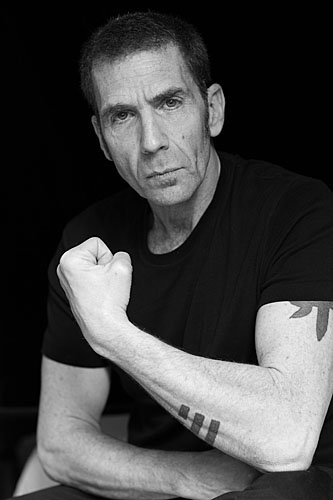
“Alternately sexy and terrifying, hysterical and weird, David Henry Sterry’s Chicken is a hot walk on the wild side of Hollywood’s fleshy underbelly. With lush prose and a flawless ear for the rhythms of the street… a coming-of-age classic that’s colorful, riveting, and strangely beautiful. David Henry Sterry is the real thing.”
— Jerry Stahl, Permanent Midnight


To buy Chicken click here.
I walk all the way up Hollywood Boulevard to Grauman’s Chinese Theatre: past tourists snapping shots; wannabe starlets sparkling by in miniskirts with head shots in their hands and moondust in their eyes; rowdy cowboys drinking with drunken Indians; black businessmen bustling by briskly in crisp suits; ladies who do not lunch with nylons rolled up below the knee pushing shopping carts full of everything they own; Mustangs rubbing up against muscular Mercedes and Hell’s Angels hogs.
It’s a sick twisted Wonderland, and I’m Alice.
This is the chronicle of a young man walking the razor-sharp line between painful innocence and the allure of the abyss. David Sterry was a wide-eyed son of 1970s suburbia, but within a week of enrolling at Immaculate Heart College, he was lured into the dark underbelly of the Hollywood flesh trade. Chicken has become a coming-of-age classic, and has been translated into ten languages. This ten-year anniversary edition has shocking new material.
“Sterry writes with comic brio … [he] honed a vibrant outrageous writing style and turned out this studiously wild souvenir of a checkered past.” – Janet Maslin, The New York Times
“This is a stunning book. Sterry’s prose fizzes like a firework. Every page crackles… A very easy, exciting book to read – as laconic as Dashiell Hammett, as viscerally hallucinogenic as Hunter S Thompson. Sex, violence, drugs, love, hate, and great writing all within a single wrapper. What more could you possibly ask for? -Maurince Newman, Irish Times
“A beautiful book… a real work of literature.” – Vanessa Feltz, BBC
“Insightful and funny… captures Hollywood beautifully” – Larry Mantle, Air Talk, NPR
“Jawdropping… A carefully crafted piece of work…” -Benedicte Page, Book News, UK
“A 1-night read. Should be mandatory reading for parents and kids.” -Bert Lee, Talk of the Town
“Alternately sexy and terrifying, hysterical and weird, David Henry Sterry’s Chicken is a hot walk on the wild side of Hollywood’s fleshy underbelly. With lush prose and a flawless ear for the rhythms of the street, Sterry lays out a life lived on the edge in a coming-of-age classic that’s colorful, riveting, and strangely beautiful. David Henry Sterry is the real thing.” –Jerry Stahl, author of Permanent Midnight
“Compulsively readable, visceral, and very funny. The author, a winningly honest companion, has taken us right into his head, moment-by-moment: rarely has the mentality of sex been so scrupulously observed and reproduced on paper. Granted, he had some amazingly bizarre experiences to draw upon; but as V. S. Pritchett observed, in memoirs you get no pints for living, the art is all that counts-and David Henry Sterry clearly possesses the storyteller’s art.” – Phillip Lopate, author of Portrait of My Body – Phillip Lopate, author of Portrait of My Body
“Like an X-rated Boogie Nights narrated by a teenage Alice in Wonderland. Sterry’s anecdotes… expose Hollywood at its seamiest, a desperate city of smut and glitz. I read the book from cover to cover in one night, finally arriving at the black and white photo of the softly smiling former chicken turned memoirist.” -Places Magazine
“Snappy and acutely observational writing… It’s a book filled with wit, some moments of slapstick, and of some severe poignancy… a flair for descriptive language… The human ability to be kind ultimately reveals itself, in a book which is dark, yet always upbeat and irreverent. A really good, and enlightening, read.” – Ian Beetlestone, Leeds Guide
“Brutally illuminating and remarkably compassionate… a walk on the wild side which is alternatively exhilirating and horrifying, outrageous and tragic… Essential reading.” – Big Issue
“Visceral, frank and compulsive reading.’ –City Life, Manchester
“Sparkling prose… a triumph of the will.” -Buzz Magazine
“Pick of the Week.” -Independent
“Impossible to put down, even, no, especially when, the sky is falling…Vulnerable, tough, innocent and wise… A fast-paced jazzy writing style… a great read.” -Hallmemoirs
“Full of truth, horror, and riotous humor.” -The Latest Books
“His memoir is a super-readable roller coaster — the story of a young man who sees more of the sexual world in one year than most people ever do.” – Dr. Carol Queen, Spectator Magazine
“Terrifically readable… Sterry’s an adventurer who happens to feel and think deeply. He’s written a thoroughly absorbing story sensitively and with great compassion… A page-turner… This is a strange story told easily and well.” – Eileen Berdon, Erotica.com
“Love to see this book turned into a movie, Julianne Moore might like to play Sterry’s mum…” – by Iain Sharp The Sunday Star-Times, Auckland, New Zealand).

Larry Mantle, Air Talk, National Public Radio, on Chicken:
“Insightful and funny… great stories… captures Hollywood beautifully…”
To listen to interview click here.
To buy Chicken click here.
I walk all the way up Hollywood Boulevard to Grauman’s Chinese Theatre: past tourists snapping shots; wannabe starlets sparkling by in miniskirts with head shots in their hands and moondust in their eyes; rowdy cowboys drinking with drunken Indians; black businessmen bustling by briskly in crisp suits; ladies who do not lunch with nylons rolled up below the knee pushing shopping carts full of everything they own; Mustangs rubbing up against muscular Mercedes and Hell’s Angels hogs.
It’s a sick twisted Wonderland, and I’m Alice.
This is the chronicle of a young man walking the razor-sharp line between painful innocence and the allure of the abyss. David Sterry was a wide-eyed son of 1970s suburbia, but within a week of enrolling at Immaculate Heart College, he was lured into the dark underbelly of the Hollywood flesh trade. Chicken has become a coming-of-age classic, and has been translated into ten languages. This ten-year anniversary edition has shocking new material.
“Sterry writes with comic brio … [he] honed a vibrant outrageous writing style and turned out this studiously wild souvenir of a checkered past.” – Janet Maslin, The New York Times
“This is a stunning book. Sterry’s prose fizzes like a firework. Every page crackles… A very easy, exciting book to read – as laconic as Dashiell Hammett, as viscerally hallucinogenic as Hunter S Thompson. Sex, violence, drugs, love, hate, and great writing all within a single wrapper. What more could you possibly ask for? -Maurince Newman, Irish Times
“A beautiful book… a real work of literature.” – Vanessa Feltz, BBC
“Insightful and funny… captures Hollywood beautifully” – Larry Mantle, Air Talk, NPR
“Jawdropping… A carefully crafted piece of work…” -Benedicte Page, Book News, UK
“A 1-night read. Should be mandatory reading for parents and kids.” -Bert Lee, Talk of the Town
“Alternately sexy and terrifying, hysterical and weird, David Henry Sterry’s Chicken is a hot walk on the wild side of Hollywood’s fleshy underbelly. With lush prose and a flawless ear for the rhythms of the street, Sterry lays out a life lived on the edge in a coming-of-age classic that’s colorful, riveting, and strangely beautiful. David Henry Sterry is the real thing.” –Jerry Stahl, author of Permanent Midnight
“Compulsively readable, visceral, and very funny. The author, a winningly honest companion, has taken us right into his head, moment-by-moment: rarely has the mentality of sex been so scrupulously observed and reproduced on paper. Granted, he had some amazingly bizarre experiences to draw upon; but as V. S. Pritchett observed, in memoirs you get no pints for living, the art is all that counts-and David Henry Sterry clearly possesses the storyteller’s art.” – Phillip Lopate, author of Portrait of My Body – Phillip Lopate, author of Portrait of My Body
“Like an X-rated Boogie Nights narrated by a teenage Alice in Wonderland. Sterry’s anecdotes… expose Hollywood at its seamiest, a desperate city of smut and glitz. I read the book from cover to cover in one night, finally arriving at the black and white photo of the softly smiling former chicken turned memoirist.” -Places Magazine
“Snappy and acutely observational writing… It’s a book filled with wit, some moments of slapstick, and of some severe poignancy… a flair for descriptive language… The human ability to be kind ultimately reveals itself, in a book which is dark, yet always upbeat and irreverent. A really good, and enlightening, read.” – Ian Beetlestone, Leeds Guide
“Brutally illuminating and remarkably compassionate… a walk on the wild side which is alternatively exhilirating and horrifying, outrageous and tragic… Essential reading.” – Big Issue
“Visceral, frank and compulsive reading.’ –City Life, Manchester
“Sparkling prose… a triumph of the will.” -Buzz Magazine
“Pick of the Week.” -Independent
“Impossible to put down, even, no, especially when, the sky is falling…Vulnerable, tough, innocent and wise… A fast-paced jazzy writing style… a great read.” -Hallmemoirs
“Full of truth, horror, and riotous humor.” -The Latest Books
“His memoir is a super-readable roller coaster — the story of a young man who sees more of the sexual world in one year than most people ever do.” – Dr. Carol Queen, Spectator Magazine
“Terrifically readable… Sterry’s an adventurer who happens to feel and think deeply. He’s written a thoroughly absorbing story sensitively and with great compassion… A page-turner… This is a strange story told easily and well.” – Eileen Berdon, Erotica.com
“Love to see this book turned into a movie, Julianne Moore might like to play Sterry’s mum…” – by Iain Sharp The Sunday Star-Times, Auckland, New Zealand).
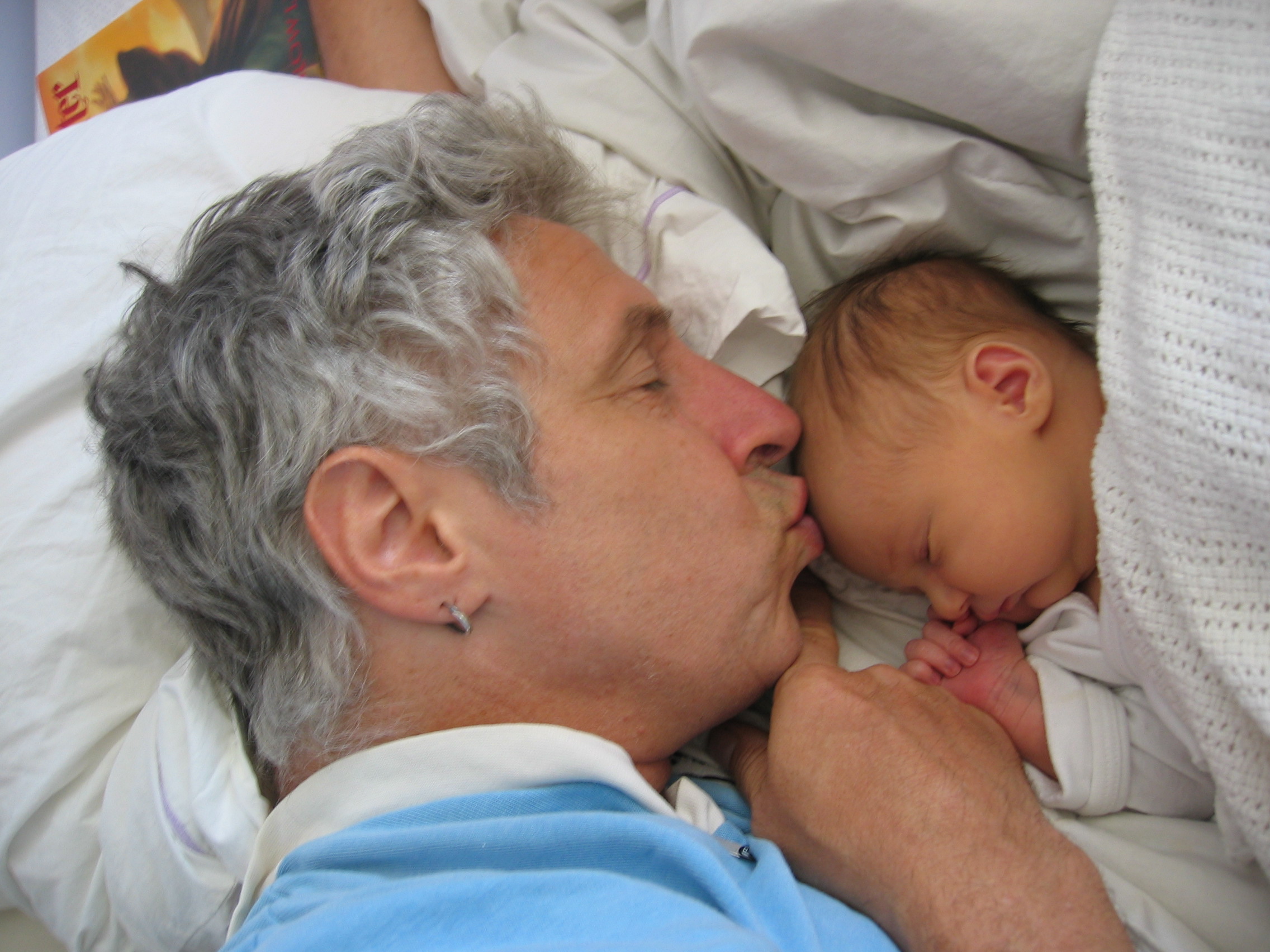
Olive Annabell Maureen Sterry  was determined to make an immediate splash, which she did by making her mother’s water break at five o’clock in the morning on September 11. Olive’s due date was September 5 so technically she was a week late, although obviously the due date is an artificial construct of a society that wishes to control this most uncontrollable of events. But this artificial due date would come to influence Olive’s birth in a profound and terrible. Because she was “late” she was not allowed to be delivered in a nice quiet birthing center suite with a big tub and a double bed, kind of like a cheap room in a Ramada Inn redone by Laura Ashley. This was the first in a series of maddeningly arbitrary decisions which were forced upon Olive by the hospital which made her life, and all our lives, so much more difficult, and seemed solely motivated by fear of litigation rather than the safety and well-being of Olive Annabell Maureen Sterry. So Olive had to be born in the madness of the delivery room of the hospital proper, and by the time she was born, the hallway was sick with contracting cervixes, and babies were practically flying out of uteri.
was determined to make an immediate splash, which she did by making her mother’s water break at five o’clock in the morning on September 11. Olive’s due date was September 5 so technically she was a week late, although obviously the due date is an artificial construct of a society that wishes to control this most uncontrollable of events. But this artificial due date would come to influence Olive’s birth in a profound and terrible. Because she was “late” she was not allowed to be delivered in a nice quiet birthing center suite with a big tub and a double bed, kind of like a cheap room in a Ramada Inn redone by Laura Ashley. This was the first in a series of maddeningly arbitrary decisions which were forced upon Olive by the hospital which made her life, and all our lives, so much more difficult, and seemed solely motivated by fear of litigation rather than the safety and well-being of Olive Annabell Maureen Sterry. So Olive had to be born in the madness of the delivery room of the hospital proper, and by the time she was born, the hallway was sick with contracting cervixes, and babies were practically flying out of uteri.
Olive’s mother basically felt nothing out of the ordinary for the 18 hours after the breaking of her water. Unbeknownst to her cervix was having a series of teeny tiny mini-contractions. I don’t know who Braxton or Hicks are, but I hope one day to have a contraction named after me. Having both seen so many movies and television shows where a pregnant woman’s water breaks, and then she has to frantically give birth in the back of a taxi, Olive’s mother and father were confused when the water so monumentally broke, a tsunami of fluids gushing willie and nilly, and then … nothing. They went to the hospital, they were examined, and were told to go home. So Olive spent the night in her mother on the day the water broke.
The next morning Olive arrived again at the hospital, and she was checked in in utero. The mother and father could not understand how this could be labor. Laughing and cracking jokes, thinking about next year’s line of mismatched socks and chilling with friends and family. Then a woman came into the hospital who was also very very pregnant. But she wasn’t laughing and cracking jokes. Pain flashed furiously out of her face as her body wracked. She was flushed and cramped, wet with mad perspiration, insane pain beaming put of her eyes. Clearly, Olive’s parents thought, there’s labor and there’s labor.
Olive’s mother was now hooked up to machines, prodded and probed, jabbed and stuck, measured and examined. A microphone was placed on her belly, and Olive’s heart was broadcast out of a speaker, while numbers appeared on a screen, and a printout spit from a computer, all synched to the heartbeat of Olive.
BOOM BOOM BOOM!
The one constant in the whole birthing process was the heartbeat of Olive. Rocksteady, pounding, it was magnificent and inspiring. Through the thick and the thin, the pushing and shoving, the tears and fears and panic and triumphant, you could’ve set your watch by Olive’s heartbeat.
BOOM BOOM BOOM!
And so they all assembled: Olive, her mom, her dad, her mother’s mother, her mother’s godmother, her dula and her midwife, with a series of nurses, technicians, doctors, drug dispensers, and the occasional cleaning person making cameo appearances. The contractions were displayed on the graph, next to Olive’s heartbeat.
BOOM BOOM BOOM!
They were small and irregular, these contractions, especially when contrasted with the heartbeat of Olive. And they stayed that way for many hours, while everyone chatted, yacked, laughed and swapped stories. It was like a party in a really depressing apartment without any music or alcohol. When Olive’s grandmother and grandfather left the contractions suddenly intensified. Olive’s mother’s eyes glazed, a dazed trance dancing on her face, her breath short, all of a sudden she wasn’t participating in the happy banter. And there on the contraction graph, a huge spike, the line jumping straight up all the way off the paper. It lasted for 30 seconds maybe, but it seemed so much longer, because it was so intense. I lived through many earthquakes in California, and that’s kind of what it was like. An earthquake. Thirty seconds takes a month and a half to pass. And then it was over.
 Olive’s mom had asked the midwife and the dula over and over, “When is it going to be Active Labor?” The dula turned to Olive’s mother and with dry sly wit said:
Olive’s mom had asked the midwife and the dula over and over, “When is it going to be Active Labor?” The dula turned to Olive’s mother and with dry sly wit said:
“Now it’s Active Labor.”
This new phase of quaking just kept going on and on and on and on and on and on, until time lost all meaning. But Olive still wasn’t coming out, and no one quite knew if her mother’s body was ready. No one knew, of course, that Olive was a behemoth. The midwife didn’t want to give an internal exam, for fear of infection, due to the fact that the water had broken so long ago. At the suggestion of the dula, Olive’s mother had been working diligently for months on the Big Ball, perfected a series of exercises which loosen the hips and pelvis. During this contraction marathon, she balanced furiously on the Big Ball, huffing and puffing and working her way through the spasms that wracked her body, telling everyone that Olive seemed to be sinking lower and lower and lower. Although at the time no one referred to Olive as Olive. Olive’s mother and father did not know Olive’s gender until they saw it. They had decided on the name Olive quite early on, but they had struggled to find a male name. Turns out they needn’t have bothered.
Finally, after too many hours of too much contracting, the midwife decided to determine how close Olive’s mother’s body was to being ready. Turns out it was not very ready at all. And by this time Olive’s mother was whipped into exhaustion, from over-exertion and powerful pain. She would start shaking, sometimes a leg, sometimes both, sometimes her whole body, violently involuntarily shaking. It reminded me of runners at the finish line of a marathon shaking uncontrollably, having lost control of their body.
The doctor wanted to cut into the belly of Olive’s mother and yank her out. It had been too long since water had broken, and if something went wrong he and the hospital would be libel. Olive’s mother said, No, please don’t cut me. Her father said , No, please don’t cut her. But the clock was ticking and the doc was a picture of institutional fiduciary grimness. Olive’s dad got so mad he wanted to punch the doctor in his smug face. Her dad managed to repress that impulse.
The dula and the midwife took the great white doctor aside and they had an animated discussion.
 The image of the scalpel cutting into the flesh and Olive being ripped out made everyone edgy, tweaky and manic, especially since people hadn’t slept for such a long time and were freaked by the possibility that after all this, the baby could die.
The image of the scalpel cutting into the flesh and Olive being ripped out made everyone edgy, tweaky and manic, especially since people hadn’t slept for such a long time and were freaked by the possibility that after all this, the baby could die.
After much deliberation and discussion, the doctor split and the dula and the midwife returned looked very happy with themselves. Something was inserted somewhere to try and make the process happen more quickly. This seemed to have little effect.
After more deliberation and discussion, it was decided that a drug would be injected to induce labor. And a pain relieving epidural seemed clearly in order.
The Anesthesiologist marched in. Crisp, meticulous and immaculate, a pin would look sloppy next to him. He seemed to have a spotlight shining on him. He wheeled in a large metallic box, like a magician, and laid out all his tools on its flat surface. I once worked as a fruit picker, with migrants. The way they attacked a fruit tree was a work of art. They didn’t seem to be moving that fast, but everything happened so rapidly you couldn’t follow it. It was surreal. That’s what the anesthesiologist was like. He had a small needle inserted near the spine of Olive’s mother so quick you thought your eyes were deceiving you. Then he threaded what looked like a metallic fishing line into the hole. Or I’m assuming he did, I didn’t see it happen, all of a sudden it was just there. I don’t even think the man spoke a word. Then all of a sudden, like the Lone Ranger, he was gone without even waiting for Thank You.
Instant relief bathed the grateful face of Olive’s mom. Her face was drained of pain, fear, tension and anxiety. The contractions kept coming thick and heavy, although Olive’s mom was bearing them much more easily. But still her body was not ready for Olive to come out. So Olive’s mother slept, gathering her strength. Recharged and revived, the inducing drugs working away, the epidural was discontinued. It was time.
This is where things got freaky. The midwife actually reached her hands into the womb and started manipulating things inside Olive’s mother. You could see Olive moving around through the thin skin, thrashing and kicking as she was sucked downdowndown into the canal as her heart beat:
BOOM BOOM BOOM!
59 hours and 45 minutes since the start of labor, the body was finally ready. The grandmother and the godmother and the husband and the dula and the midwife prepared with the mother for the final push. With the midwife’s fingers expertly manipulating inside the body of Olive’s mother, the pushing began again. Three to each contraction.
On and on it went, with each contraction the midwife exhorting, imploring, encouraging the mother to keep pushing even when she could push no more, three pushes, with the breath held, then release and sink into the bed.
Suddenly there it was. A miracle. The top of the head. Even though it was clearly visible it was completely unbelievable. Even though you knew it was going to happen, it was incomprehensible. Even though you understood what was going on, it was ununderstandable. Even though it was impossible, it was actually happening.
The grandmother wept and wept, as she helped, great tears of joy and release, and the godmother kept saying just the right things at just the right moment to relieve the tension. The dula was here there and everywhere, supplying what was needed even before it was asked for. The husband whispered in the ear, and supplied the oxygen. And the midwife was like the captain of the team, organizing, letting everyone know what they should do in a commanding yet gentle voice, always knowing what to do, with her hands deep inside the body of the mother, moving and rearranging and allowing life to enter the world.
A third of the head was pushed out and then went back in again at the end of the contraction. And then there it was again with another contraction and push, the whole head, even as they watched they kept asking themselves:
“How is this happening?”
The midwife started yanking on the head with what seemed like, to the interested observer, shockingly violently aggression. The father had a sudden vision of the midwife ripping his daughter’s head right off, the poor headless baby flailing its arms, while the horrified head looked on.
But no, the midwife’s magic fingers slid Olive right out of her mother.
A collective gasp filled the room. The mother was overcome with relieved jioe de vivre and unspeakable metaphysical physical soul opening exhilaration and awe.
Suddenly there she was:
Olive Annabell Maureen Sterry.
Alive, laying on her mother’s chest, still attached by the cord to the inside. The midwife and dula rubbed Olive with sweet vigor. Olive’s tiny yet huge lungs filling with air, and she gave out a small surprised cry, like: Wow, I’m really here!
 The father cried copious tears overflowing with a love that he had never felt. He saw Olive learning to talk and walk and read and going to school and learning to drive and falling in love and getting married and having a baby of her own, eternity in an instant, infinity in an infant’s eyes.
The father cried copious tears overflowing with a love that he had never felt. He saw Olive learning to talk and walk and read and going to school and learning to drive and falling in love and getting married and having a baby of her own, eternity in an instant, infinity in an infant’s eyes.
And that is how, after almost 60 hours of labor, Olive Annabell Maureen Sterry came into the world weighing a whopping 9 lbs. 2 oz at 2:19 p.m. on September 13, 2007.
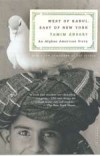
To commemorate the publication of the 10 year anniversary edition of my memoir Chicken Self:-Portrait of a Man for Rent, I have decided to do start The Memoir Project. I’ll be doing a series of interviews with memoirists I admire. I have known Tamim Ansary for what seems like a lifetime, but isn’t. He runs the San Francisco Writers Workshop, and in that capacity he demonstrates every Tuesday night how much he knows about writing and books and people. He’s been a professional writer for a very long time. I’ve said publicly that he is the wisest men I know, and I stand by that statement.
David Henry Sterry: Why in god’s name did you decide to write a memoir?
 Tamim Ansary: Well, that’s a complicated question since I’ve written three. The first one, West of Kabul, East of New York, I wrote in response to a historical moment. The events of 9/11 had highlighted to rift between the Islamic world and the West, which took most Americans by surprise. I knew all about this issue because I was born in Afghanistan of an Afghan father and an American mother, I had grown up in but grown old in America, and so my whole life had straddled this crack in the culture of the planet. I felt like I was the guy perched on the fence who could see the people on both sides even though they couldn’t see each other. I thought writing about my bicultural life might do some good in the world. The second memoir I wrote was actually someone else’s. I wrote it for an Afghan girl named Farah Ahmadi who had stepped on a land mine when she was in second grade, had lived the horrors of the long war in Afghanistan, and had confronted them with flabbergasting dignity and courage. The exact circumstances of my writing that memoir are peculiar, but I thought her life was an embodiment of both tragedy and resilience that people should know about. So these memoirs were attempts to engage with the world of politics and history. But my latest memoir is a very different sort of project. This is a more philosophical examination of “life story,” a phrase we often use without pausing to consider the implications; because the quesiton is, does a life have a story, a narrative arc, in the same way as a novel? A beginning, middle and end that adds up to meaning of some sort? Several years ago, I was telling someone about a trip I had taken, I happened to tell it all one sitting, and when I was done, it struck me that any journey to any place far away and difficult to reach has a narrative arc if consider it as a whole. I wondered if I could capture the “story-like arc” of one-whole-life by recounting a selection of iconic journeys. The result is Road Trips. The journeys I chose for this book took place when I was 10, 19, 24, 31, 50, and 52: so the movement is through time as much as space. This memoir is not hooked to news events or public issues, it tells a private story, and it’s a story I believe all of us have some version of: that odyssey from young to old and the things that happen along the way: falling in love, falling out of love, breaking up, breaking down, drifting, drowning, searching for solid ground… and finding it…maybe… The details are different for each person but underneath the welter of particulars is, I think, some single story that can be made visible only through the details of a specific life. Mine is the only life I know well enough to use as such a lens, and so I wrote this book. But I’m hoping this book will get readers ruminating on the story-like elements of their own lives even if, as is likely, their lives and mine don’t share a single particular detail. Because my premise here is that the narrative is there in every life; it’s there, you just have to look for it.
Tamim Ansary: Well, that’s a complicated question since I’ve written three. The first one, West of Kabul, East of New York, I wrote in response to a historical moment. The events of 9/11 had highlighted to rift between the Islamic world and the West, which took most Americans by surprise. I knew all about this issue because I was born in Afghanistan of an Afghan father and an American mother, I had grown up in but grown old in America, and so my whole life had straddled this crack in the culture of the planet. I felt like I was the guy perched on the fence who could see the people on both sides even though they couldn’t see each other. I thought writing about my bicultural life might do some good in the world. The second memoir I wrote was actually someone else’s. I wrote it for an Afghan girl named Farah Ahmadi who had stepped on a land mine when she was in second grade, had lived the horrors of the long war in Afghanistan, and had confronted them with flabbergasting dignity and courage. The exact circumstances of my writing that memoir are peculiar, but I thought her life was an embodiment of both tragedy and resilience that people should know about. So these memoirs were attempts to engage with the world of politics and history. But my latest memoir is a very different sort of project. This is a more philosophical examination of “life story,” a phrase we often use without pausing to consider the implications; because the quesiton is, does a life have a story, a narrative arc, in the same way as a novel? A beginning, middle and end that adds up to meaning of some sort? Several years ago, I was telling someone about a trip I had taken, I happened to tell it all one sitting, and when I was done, it struck me that any journey to any place far away and difficult to reach has a narrative arc if consider it as a whole. I wondered if I could capture the “story-like arc” of one-whole-life by recounting a selection of iconic journeys. The result is Road Trips. The journeys I chose for this book took place when I was 10, 19, 24, 31, 50, and 52: so the movement is through time as much as space. This memoir is not hooked to news events or public issues, it tells a private story, and it’s a story I believe all of us have some version of: that odyssey from young to old and the things that happen along the way: falling in love, falling out of love, breaking up, breaking down, drifting, drowning, searching for solid ground… and finding it…maybe… The details are different for each person but underneath the welter of particulars is, I think, some single story that can be made visible only through the details of a specific life. Mine is the only life I know well enough to use as such a lens, and so I wrote this book. But I’m hoping this book will get readers ruminating on the story-like elements of their own lives even if, as is likely, their lives and mine don’t share a single particular detail. Because my premise here is that the narrative is there in every life; it’s there, you just have to look for it.
DHS: What were the worst things about writing your memoir?
TA: The worst thing, I guess, is getting flak from people whom I mentioned in the memoirs, people whose feelings I hurt, people who didn’t seem themselves the way I portrayed them, people who were disturbed, in some cases, to experience themselves as a side chaaracters in someone else’s life, not as the protagonist which is everybody’s internal identitication of him- or herself. And there’s another disturbing thing, which is bound to happen when you write a memoir, especially if you’re doing it right, and especially if the focus is on your own life, not on some public event you observed. This is the discovery of narratives you’ve been carrying in your head all your life which are distorted, even false.
DHS: What were the best things about writing your memoir?
TA: I’ll start where my answer to your last question ended. Gaining discomifting new perspectives on the things you’ve seen, done, and felt is also the good thing about writing a memoir. One can never have too many epiphanies. And in the case of Road Trips, writing it brought epiphanies not just about my own little life but about the life we’re living on this planet, the implications of permanence and change, culture and identity, memory and time, fiction and reality–I mean writing a memoir, if you share my premise about life as story, does immerse you in the most fundamental issue of them all: everything feels so real when it’s happening, but when you look back, all you see is story. So was any of it real in the first place? And if,like me, you decide it was and you feel a connection to what is real, there is no better feeling.
DHS: Did writing your memoir help you make some order out of the chaos we call life?
TA: Asked and answered, your honor? Well, the true answer is yes and no. A memoir helps you make sense of things. Then life keeps happening and it all grows muddy again. You look back and the meaning of it all changed, even stuff you wrote about earlier and thought you nailed completely. The train never stops moving and the same landscape keeps looking different as you move.
DHS: How did you make a narrative out of the seemingly random events that happened to you?
TA: Well, random is a part of life, but so is intention. We’re never just knocking about like particles in Brownian motion. We’re always trying to push our story forward, through the random flotsam and jetsom of the world. Some of that flotsam are obstacles and so they inherently become part of our story; some turn out to be tools but only if we figure out that we can use them, and so those are part of the story too. Some don’t fit into the story either way, so we ignore them, forget them. My premise is that when you write a memoir, you don’t “make a narrative,” you find the narrative. Intentions and obstacles are the indispensable elements of story and those exist in real life at every moment for every person.
DHS: How was the process of selling your memoir?
TA: Selling the first one was easie macheesie because I had just written an email in reaction to the events of 9/11 to twenty or thirty of my friends explaining what I, as an Afghan, thought about the horror because I knew they’d all be asking and I thought it would be say it once to all twenty of them. Those twenty each sent my email to dozens of their friends and by the next day the email had gone viral across the globe and by the weekend had reached tens of milliions–it was, in fact, one of the first examples of the viral phenomenon that the Internet has made possible. That 900 words email took no longer to write than to type. Don’t tell met here is an inherant contradiciton between random events and story: nothing could be as random and accidental as that email and yet it is certainly a story. Anyway, after the email went viral, my agent had no trouble getting publishers interested. The second one, Farah Ahmadi’s The Other Side of the Sky was an odd one. Good Morning America staged a contest for the most inspiring life. Various people sent in one-page descriptions of their life story and the one judged most inspiring got a bunch of cash and a book about them written by a professional writer. Farah won the contest, and I was part of her prize. The third one I’ve just completed, so I’m still n the process of selling it. The difficulty here is that memoirs usually sell on their news hook. They promise to take readers to places they have not been and could never go without this memoir. I promise just the opposite: I intend to take readers to places they too have been, not to startle them with how unique my life has been but to startle them with how unique theirs has been. We’ll see if that concept sells.
DHS: How did you go about promoting and marketing your memoir?
TA: I’m not much of a guy for marketing and promotion much, so I just write ’em and hope the chips fall were they do me some good. The publisher did send me on an extensive book tour for West of Kabul, East of New York, bookstores mostly, and I read from my book and talked. With Road Trips, I’ve been reading from it at literary events, bars, bookstore reading and whatnot while I’ve been writing it, to enthusiastic response, so perhaps I’ve been building an audience for it even while it has been in progress.
DHS: Did you have difficulty speaking in public about the intimate aspects of your memoir?
TA: I used to have difficulty speaking in public about anything—really, anything. Then 9/11 happened, that email went viral, and suddenly I was yanked onto various stages and in front of cameras and microphones facing crowds clamoring to know the stuff I happened to know about and the crisis was so intense, I had to tell what I knew, pour it out, no time to remember that I was shy about speaking in public, I was babbling nonstop, scarcely even knowing what I was saying, for months. When it finally slowed down, I found I no longer had any difficulty speaking in public about anything. And that transformation ha endured. Still, I maintain some reserve. Anything I’ve written about, I’ll speak about. Why not? It’s already out there. Anything I’ve held back about in writing, I will maintain some reserve about in public too. The thing is, I was out to tell my story. People whose paths have crossed mine have shown up in my story, but they have their own stories and I try not to be the one that’s telling theirs.
DHS: How did your family, friends and loved ones react to your memoir?
TA: After I published West of Kabul, East of New York, my mother said “What do you mean I had brown hair? I was a blond!” One of my cousins said how could I call a famous ancestor of ours “a landowner and a poet.” He was a saint! Another cousin observed that of the uncles I had mentioned, his father should have been named the most eminent. An aunt wasmiffed that I had called another aunt Elizabeth-Taylor beautiful. I have also gotten some pretty severe and wounding blowback from Road Trips. On the other hand, I think the first memoir helped me and my brother reconnect after a long estrangement. If you’re going to write a memoir, you have to be ready for some flak. You’ll get it even from—perhaps most of all from—people you’ve scarcely mentioned.
DHS: I hate to ask you this, but you have any advice for people who want to write a memoir?
TA: Well, I’ll say one thing about process: I think it’s a good idea to start without a plan and to do your first rush of remembering while you’re at the keyboard typing away, writing it down. I’d say, let the process of association take you where it will. I’d say, don’t pay attention to what you’re saying or what you’ve just said, focus only on what you’re about to say. Don’t push the string, let yourself be pulled. Later you’ll see what you’ve got and at that point you’ll have to apply other skills to craft your work, but the first skill to cultivate is letting go and not caring or judging. Association is the mechanism of memory, and memory is itself a narrative-creating machine. We tend to think of memories as videotapes that we bring out of storage, but neural scientists tell us that memories are constructed in the act of remembering. They also say that more than half of what we think are perceptions are actually reactions to memory. When we reach for a doorknob we only perceive a flash of color and shape, memory supplies the fact that it is a doorknob and what a doorknob is and what we can do with one. Expand that perception and you realize that we’re always living as much in a story as in an immediately present world, in a narrative whose shape depends on what has happened before and what we expect or hope will happen later.S ettle in with this truth and you begin to see what a gigantic thing it is to write a memoir.
Tamim Ansary writes memoir, fiction, history, essays, and blogs. His book West of Kabul, East of New York tell the story of a life straddling Afghanistan and America. He runs the 65-year-old San Francisco Writers Workshop as well intensive memoir workshops in his home.
David Henry Sterry is the author of 16 books, a performer, muckraker, educator, activist, and book doctor. His new book Chicken Self:-Portrait of a Man for Rent, 10 Year Anniversary Edition, has been translated into 10 languages. He’s also written Hos, Hookers, Call Girls and Rent Boys: Professionals Writing on Life, Love, Money and Sex, which appeared on the front cover of the Sunday New York Times Book Review. He is a finalist for the Henry Miller Award. He has appeared on, acted with, written for, been employed as, worked and/or presented at: Will Smith, a marriage counselor, Disney screenwriter, Stanford University, National Public Radio, Milton Berle, Huffington Post, a sodajerk, Michael Caine, the Taco Bell chihuahua, Penthouse, the London Times, Edinburgh Fringe Festival, a human guinea pig and Zippy the Chimp. He can be found at www.davidhenrysterry.com. https://davidhenrysterry.com/


